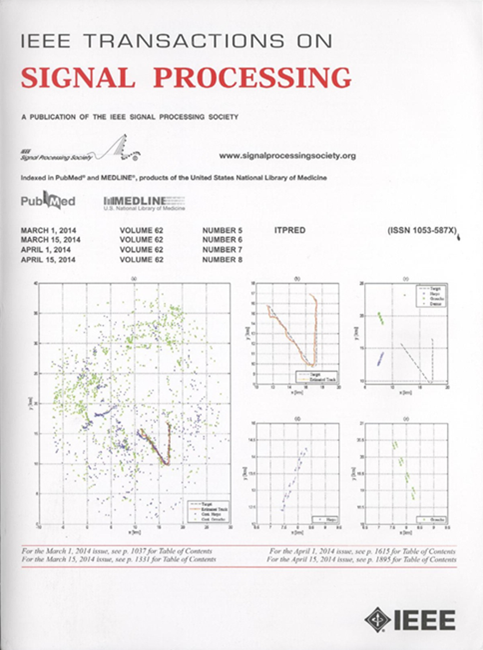基于广义近似消息传递的快速鲁棒稀疏贝叶斯学习图像重建模型
IF 4.6
2区 工程技术
Q1 ENGINEERING, ELECTRICAL & ELECTRONIC
引用次数: 0
摘要
稀疏贝叶斯学习是一种基于贝叶斯统计理论的高维数据处理算法。其目标是通过引入稀疏性来提高模型的泛化能力和效率,即只保留图像的一些重要特征。然而,传统的稀疏贝叶斯学习算法在迭代更新过程中涉及到n$\boldsymbol{\times}$n维矩阵反演的操作,严重影响了图像重建的效率和速度。为了克服上述缺陷,本文提出了一种基于广义近似消息传递的快速鲁棒稀疏贝叶斯学习图像重建模型(GAMP-FRSBL)。为了避免矩阵反演问题,在SBL的基础上引入了阻尼高斯广义近似消息传递算法(damped GGAMP)。结合凸优化策略,采用块坐标下降法(BCD)迭代更新参数,提高了模型的重建效率。最后,在Indor和Mondrian图像、DOTA、COCO和UCM数据集上进行了实验,验证了GAMP-FRSBL在图像重建中的有效性。本文章由计算机程序翻译,如有差异,请以英文原文为准。
Fast Robust Sparse Bayesian Learning Image Reconstruction Model Based on Generalized Approximate Message Passing
Sparse Bayesian learning (SBL) is an algorithm for high-dimensional data processing based on Bayesian statistical theory. Its goal is to improve the generalization ability and efficiency of the model by introducing sparsity, that is, retaining only some important features of the image. However, the traditional Sparse Bayesian Learning algorithm involves the operation of n$\boldsymbol{\times}$
求助全文
通过发布文献求助,成功后即可免费获取论文全文。
去求助
来源期刊

IEEE Transactions on Signal Processing
工程技术-工程:电子与电气
CiteScore
11.20
自引率
9.30%
发文量
310
审稿时长
3.0 months
期刊介绍:
The IEEE Transactions on Signal Processing covers novel theory, algorithms, performance analyses and applications of techniques for the processing, understanding, learning, retrieval, mining, and extraction of information from signals. The term “signal” includes, among others, audio, video, speech, image, communication, geophysical, sonar, radar, medical and musical signals. Examples of topics of interest include, but are not limited to, information processing and the theory and application of filtering, coding, transmitting, estimating, detecting, analyzing, recognizing, synthesizing, recording, and reproducing signals.
 求助内容:
求助内容: 应助结果提醒方式:
应助结果提醒方式:


